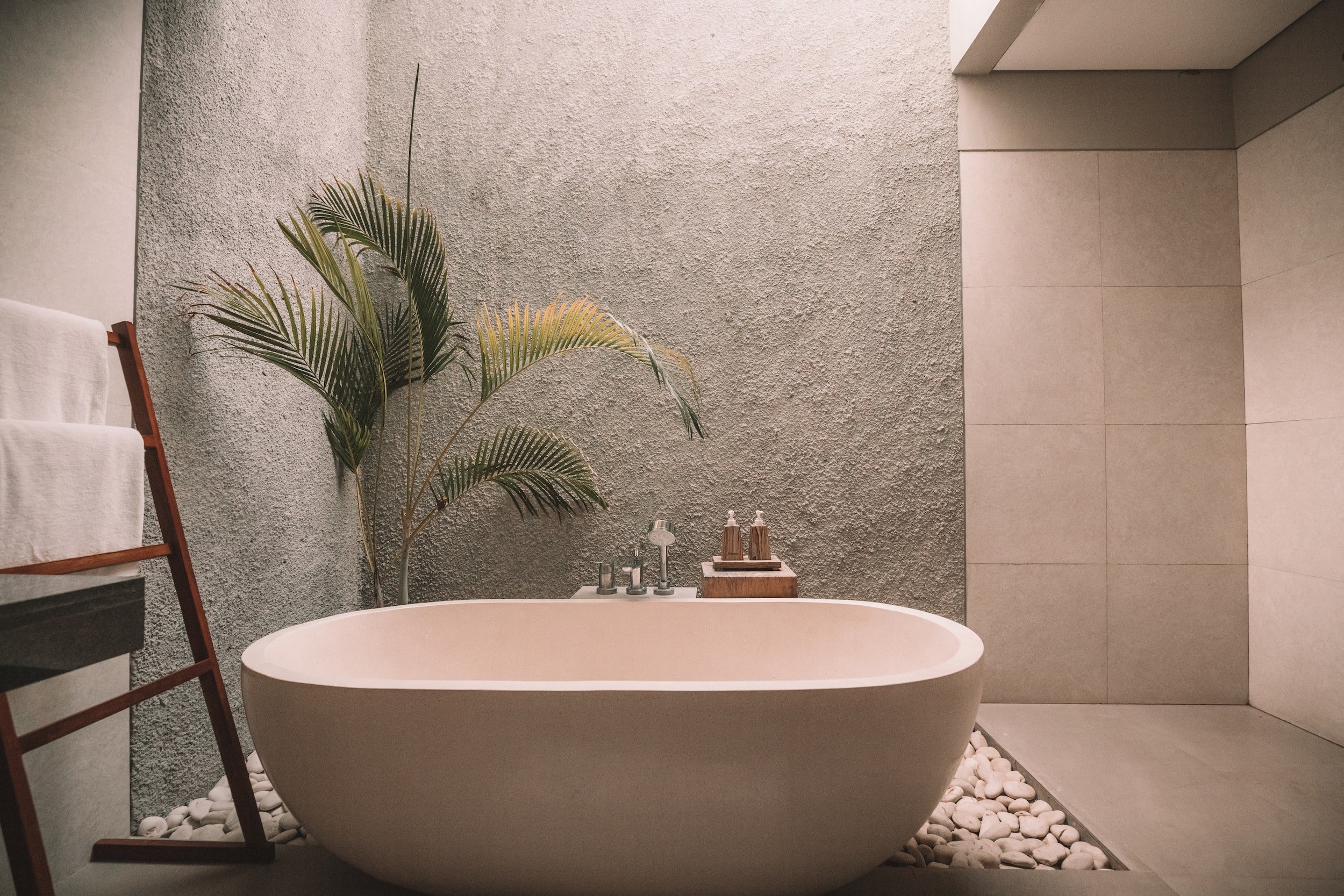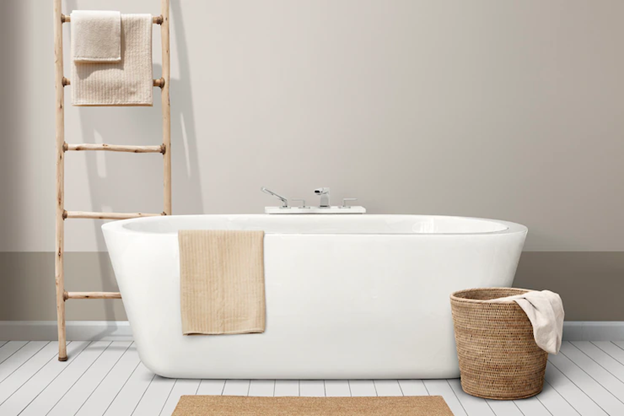6 Types of Freestanding Bathtub Accessories
/Here is a new blog post from a guest author contributing to
Lang’s Kitchen & Bath’s website. All views expressed are those of the author.
We hope you find this topic helpful!
Freestanding bathtubs have become increasingly popular in recent years for their elegance, particularly their timeless look and ability to create a spa-like atmosphere in the bathroom. However, it's crucial to take into account the accessories that can be matched with a freestanding bathtub in order to genuinely improve the overall bathroom experience.
There are several accessories available that can improve the standalone bathtub's operation and overall appearance. The six different freestanding bathtub accessory types will be covered in this article.
Understanding the different freestanding bathtub accessories can help create a useful and beautiful area, whether you're designing a bathroom, remodeling, or just freshening up your current bathroom.
Types of Freestanding Bathtub Accessories
1. Shut-off valves
The shut-off valve is one of the most crucial plumbing components for a freestanding tub. The water flow to the tub is managed by this valve. Usually, it is positioned between the tub and the primary water supply.
The shut-off valve is a crucial component of the plumbing for a freestanding tub, and it allows the user to turn the water on and off as needed. It also makes repairs and replacements simple. Shut-off valves come in a variety of designs and components, such as brass, chrome, and plastic.
They can be installed in many places, including the basement, crawlspace, and the wall next to the bathtub. To guarantee the water supply is pure and safe, some shut-off valves also incorporate extra features like built-in filters or pressure regulators.
It is essential to check that the shut-off valve is the right size and compatible with the plumbing for a standalone tub before installing it. Additionally, the valve can be set up in an accessible area. Before utilizing the tub, it is also crucial to test the valve to make sure it functions properly.
2. Faucets
For a standalone bathtub, faucets and showerheads are necessary extras. They contribute to the overall appearance of the bathroom while also serving the functional goal of offering water flow and temperature regulation.
There are numerous choices accessible when it comes to freestanding bathtub faucets. The bathtub is equipped with deck-mounted faucets. Freestanding faucets are also installed on the floor adjacent to the bathtub at the same time. Although wall-mounted faucets are similarly functional, freestanding faucets are more common.
Because they are simple to install and offer a sleek, modern appearance, deck-mounted faucets are the most popular option for freestanding bathtubs. Since the controls are positioned right on the faucet, they also provide you with better control over the water flow and temperature. They do, however, need holes to be drilled into the bathtub for installation, which may be a downside for some.
Freestanding faucets, in contrast, don't necessitate making holes in the bathtub. In front of the bathtub, they are installed on the floor. They come in a variety of shapes and finishes and give the bathroom a distinctive, exquisite appearance. However, compared to deck-mounted faucets, they may be more difficult to install and may require more floor space.
1. Showerheads
There are numerous alternatives available when it comes to showerheads as well. More versatility is offered by handheld showerheads because they can be used for both washing and cleaning.
Showerheads that are fastened to the wall are normally solely used for rinsing. Showerheads with waterfalls offer an opulent, spa-like sensation and a sleek, contemporary appearance.
When selecting a showerhead, it's crucial to also take the water flow rate into account. The flow rate is measured in gallons per minute (GPM), and a lower flow rate showerhead can help save on water consumption.
2. Bathtub caddies
A popular addition to freestanding bathtubs is bathtub caddies. They offer a practical and relaxing method to enjoy bath time. These holders are made to fit on the bathtub rim and offer a surface for carrying necessities like a book, wine glass, or tablet.
Bathtub caddies are available in a variety of designs and materials, such as metal, bamboo, and wood. Some caddies come with extra features like integrated lights, wine containers, or extendable trays to fit larger things.
One of the main advantages of bathtub caddies is that they offer a relaxing and practical method to spend bath time. They make it possible for you to have everything you require at your fingertips, removing the need for you to get out of the bathtub to get stuff. This can improve bathing in general and make it more pleasurable.
Bathtub caddies also give the bathroom a hint of opulence and elegance. In order to create a tranquil and spa-like ambiance, they can hold candles, flowers, or other ornamental things.
The dimensions and shape of your bathtub must be taken into account while selecting a bathtub caddy. While some caddies are specifically made for a particular size or shape of bathtub, others are flexible and can accommodate a wide range of bathtub sizes. The caddy's materials and finish should also be taken into account because they have an impact on the bathroom's overall appearance and atmosphere.
The strength and stability of the caddy are two additional crucial factors to take into account. Some caddies have better resistance to warping or rusting because they are composed of materials that can endure moisture, heat, and humidity. The caddy must also be solid enough to support the things without tipping.
In addition, keep in mind that the bathtub caddy can also be used as a storage space. Some caddies have shelves or compartments holding soap, shampoo, and other bath essentials.
1. Bathmats and rugs
As they offer a cozy and secure place to step on after a bath or shower, bath mats and rugs are essential bathroom furnishings. They also provide the bathroom a dash of style and color, making it appear cozier and more welcome.
Cotton, microfiber, and memory foam are just a few of the materials that are used to make bath rugs and mats. Bath mats made of cotton or microfiber are a great choice for bathrooms with a lot of traffic because they are quick to dry and absorbent. However, thin foam bath mats are exceptionally soft and give your feet more relaxation.
Bath rugs and mats come in a variety of styles, including solid colors, patterns, and textured weaves. To avoid slips and falls, certain bath mats also have a skid-resistant backing.
It's important to think about the dimensions of your bathroom and foot activity when selecting a bath mat or rug. For larger bathrooms or areas with a lot of daily use, you might need a bigger bathmat or rug. The fabrics and design should also be taken into account because they might change how the bathroom looks and feels overall.
Reliability and ease of upkeep of the bath mat or rug are other factors to take into account. While some fabrics can be machine cleaned and are more durable than others, some may need more sensitive cleaning.
2. Drain stoppers
Drain stoppers are an essential component of freestanding bathtubs because they regulate water flow and keep it contained for a relaxing and pleasant soak. Drain stoppers are available in a variety of designs and materials, and they can be used for soaking, filling, and emptying the bathtub, among other things.
The push-and-pull stopper is one of the most popular varieties of drain stoppers. It is simple to open or shut this stopper by pushing or tugging it after it has been introduced into the drain. For those who enjoy taking lengthy baths, this stopper is simple to use and ideal.
The lift-and-turn stopper is another kind of drain stopper. It is simple to open or shut this stopper by raising or turning it after it has been introduced into the drain. This stopper is ideal for those who enjoy taking brief baths and is simple to use.
Additionally, there are drain stoppers that are more specialized and made for particular uses. To avoid the bathtub from spilling while it is being filled, for instance, some drain stoppers contain built-in overflow prevention. Other drain stoppers have integrated hair catchers to keep hair and debris from blocking the drain.
It's crucial to consider the stopper's design and substance while selecting one. Rubber, metal, and plastic are just a few materials used to make drain stoppers. Rubber stoppers are strong and adaptable, making them ideal for prolonged baths.
Metal stoppers provide a more upscale appearance. Although they are portable and straightforward, plastic stoppers are not as stable as rubber or metal ones.
The drain stopper's size and shape should also be taken into account. It should fit snugly to prevent water from escaping from the bathtub drain.
Conclusion
Freestanding bathtub accessories can significantly improve the quality of the bathroom as a whole. From faucets and showerheads to bathroom mats and rugs, each item has its own advantages and disadvantages.
When choosing items, it's crucial to keep in mind their style, usefulness, and price range to ensure they match the bathroom's decor and cater to the user's demands. The lifetime of the attachments can be extended, and they can be kept looking and performing like new with proper cleaning and maintenance.
It's important to remember that even seemingly insignificant things can significantly impact how a bathroom feels and looks. You may design a stunning and valuable area with the proper accessories, giving you a relaxing and revitalizing bathroom experience.





